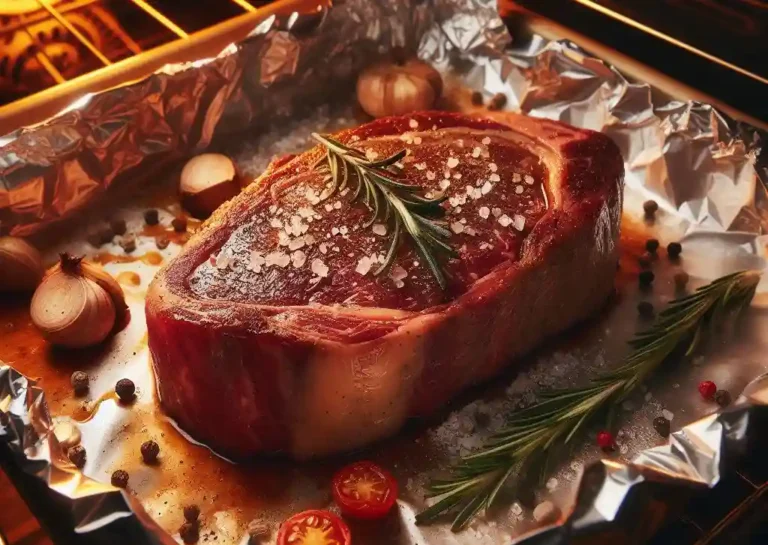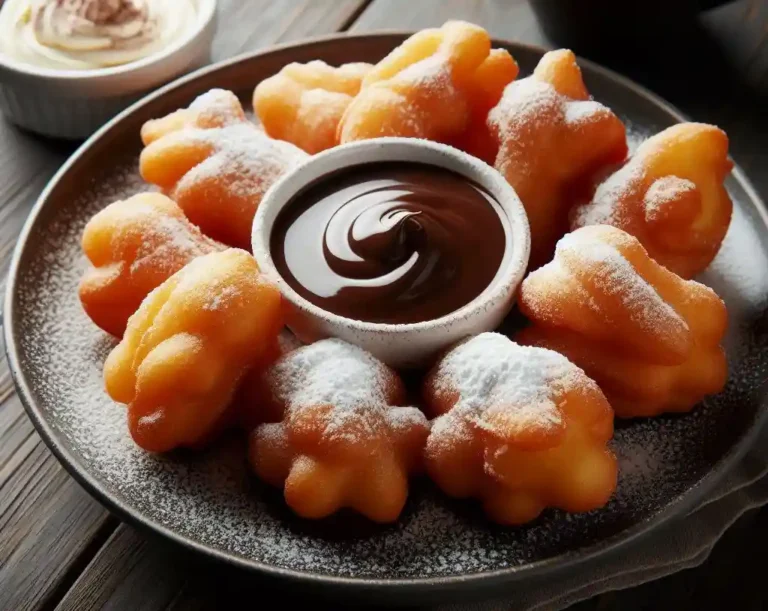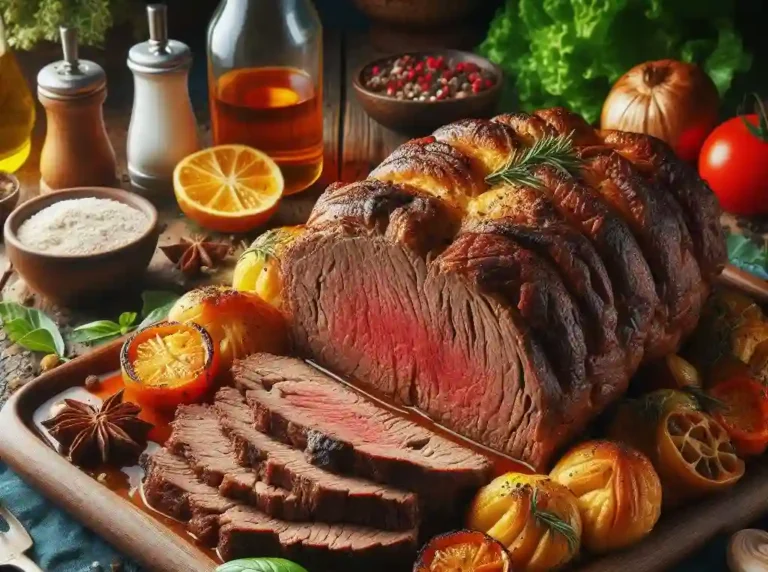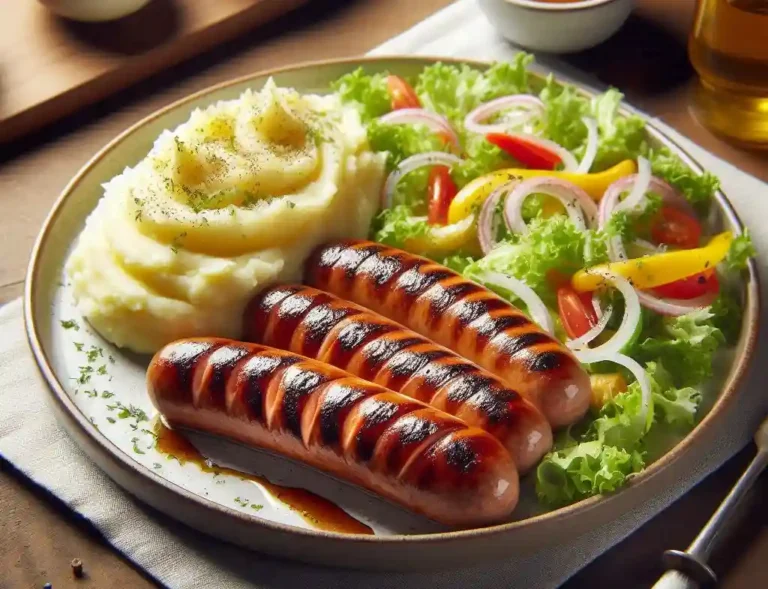How to Make Reese’s Peanut Butter Filling: From Scratch to Delicious
Are you a peanut butter lover dreaming of recreating the creamy, dreamy goodness of Reese’s Peanut Butter Cups in the comfort of your kitchen? Look no further!
In this post, we’ll dive into peanut butter filling and show you how to make a Reese-inspired one that will satisfy your cravings.
With simple ingredients and easy-to-follow instructions, you’ll be whipping up a batch of creamy, nutty goodness in no time.
How to Make Reese’s Peanut Butter Filling: A Quick Overview

Ingredients:
- 1 cup creamy peanut butter (no added oils or sugars)
- 1/2 cup confectioners’ sugar
- 1/4 teaspoon salt
- 1 tablespoon shortening (like Crisco or vegetable shortening)
- Optional: 1-2 tablespoons milk or heavy cream (for a creamier consistency)
Instructions:
- Combine peanut butter and confectioners’ sugar: In a medium-sized bowl, cream together the peanut butter and confectioners’ sugar until smooth and well combined.
- Add salt and mix: Add the salt and mix until incorporated.
- Add shortening and mix: Add the shortening and mix until the mixture is smooth, creamy, and light.
- Add milk or heavy cream (optional): If you want a creamier consistency, add 1-2 tablespoons of milk or heavy cream and mix until well combined.
- Taste and adjust: Taste the filling and adjust the sweetness or consistency as needed.
- Use immediately or store: Use the peanut butter filling immediately, or store it in an airtight container in the refrigerator for up to 2 weeks or freeze for up to 3 months.
Tips and Variations:
- For a more authentic Reese’s taste, use a high-quality peanut butter with no added oils or sugars.
- Experiment with different flavor combinations, like adding a pinch of sea salt or a teaspoon of vanilla extract.
- If the filling is too thick, add a little more milk or heavy cream. If it’s too thin, add a little more confectioners’ sugar.
- Use this peanut butter filling to make your own peanut butter cups, sandwich cookies, or as a dip for fruit or graham crackers.
Gather Your Ingredients: The Essential List for Making Reese’s Filling

The Must-Haves
- Peanut butter: Creamy or crunchy, whichever you prefer. Natural peanut butter or peanut butter with added oils and sugars will both work.
- Confectioner’s sugar (powdered sugar): This is the primary sweetener and helps bind the mixture together.
- Salt: A pinch of salt enhances the flavor and balances the sweetness.
- Vanilla extract (optional): Adds a hint of flavor and aroma.
The Nice-to-Haves
- Shortening (e.g., Crisco or vegetable shortening): Helps with texture and consistency, making the filling smoother and more pliable.
- Milk or heavy cream (optional): Adds moisture and helps with blending, especially if you’re using natural peanut butter.
Optional Add-ins
- Chocolate chips or chocolate syrup (for a chocolate-peanut butter swirl effect)
- Chopped nuts (e.g., peanuts, almonds, or pecans) for added texture and flavor
- Sea salt or flaky salt for a touch of crunch and flavor contrast
Tips and Variations
- For a lighter filling, use more confectioner’s sugar and less peanut butter.
- Experiment with different types of nut butters, like almond or cashew butter, for unique flavor profiles.
- Add a pinch of cinnamon, nutmeg, or cayenne pepper to create unique flavor combinations.
The Perfect Blend: How to Creamy Peanut Butter and Sugar Together

The perfect blend! Let’s dive into combining peanut butter and sugar to create a smooth, creamy, and delicious Reese-inspired filling.
The Key to a Smooth Blend
- Room temperature ingredients: Ensure both the peanut butter and sugar are at room temperature. This helps them blend together seamlessly.
- Use the right ratio: Aim for a 1:1 to 2:1 ratio of peanut butter to sugar. This balance provides a smooth, creamy texture and the perfect sweetness.
- Gradual addition: Add the sugar to the peanut butter gradually, mixing well between each addition. This prevents the sugar from forming clumps and ensures a smooth blend.
- Mixing technique: Use an electric mixer, such as a stand mixer or handheld mixer, to cream the peanut butter and sugar together. This helps to break down the sugar and incorporate air, resulting in a light and fluffy texture.
The Blending Process
- Start with peanut butter: Place 1-2 cups of creamy peanut butter in a large mixing bowl.
- Add sugar gradually: Gradually add 1-2 cups of confectioner’s sugar to the peanut butter, mixing well between each addition.
- Mix until smooth: Continue mixing until the sugar is fully incorporated and the mixture is smooth, creamy, and light.
- Scrape down the bowl: Stop the mixer occasionally to scrape down the sides of the bowl, ensuring all ingredients are well incorporated.
- Check the consistency: If the mixture is too thick, add a small amount of milk or heavy cream. If it’s too thin, add a small amount of confectioner’s sugar.
Tips for a Perfect Blend
- Use a high-quality peanut butter with a smooth, creamy texture.
- Sift the confectioner’s sugar before adding it to the peanut butter to remove any lumps.
- Mix the peanut butter and sugar for an additional 2-3 minutes after they appear fully incorporated to ensure a smooth, creamy texture.
- If using a stand mixer, use the paddle attachment for the best results.
The Magic Ingredient: How Salt Enhances the Flavor of Your Filling

The magic ingredient! Salt is often overlooked, but it plays a crucial role in enhancing the flavor of your Reese’s-inspired peanut butter filling. Let’s dive into the world of salt and explore its magic!
The Role of Salt
- Balances sweetness: Salt counterbalances the sweetness of the sugar and peanut butter, creating a harmonious flavor profile.
- Enhances flavors: Salt brings out the natural flavors of the peanut butter, making it taste more rich and nutty.
- Adds depth: Salt adds a savory element to the filling, adding depth and complexity to the flavor profile.
The Science Behind Salt
- Flavor suppression: Salt suppresses the bitterness of the peanut butter, allowing the other flavors to shine.
- Flavor enhancement: Salt enhances the umami flavor of the peanut butter, making it more savory and rich.
- Texture modification: Salt helps to balance the texture of the filling, making it smoother and more spreadable.
The Right Amount of Salt
- Start with a pinch: Begin with a small amount of salt (about 1/4 teaspoon) and adjust to taste.
- Taste as you go: Add salt gradually, tasting the filling after each addition to ensure the flavor is balanced.
- Salt to taste: Remember, salt is a personal preference, so adjust the amount to your taste buds’ delight!
Types of Salt
- Table salt: A classic choice, table salt is a good all-purpose option.
- Sea salt: Adds a slightly sweet and crunchy texture to the filling.
- Flaky salt: Provides a delicate, crunchy texture and a touch of elegance to the filling.
Tips and Variations
- Salted peanut butter: Use salted peanut butter for an added boost of flavor.
- Salted caramel: Add a pinch of flaky salt to the caramel sauce for a salty-sweet contrast.
- Spicy kick: Add a pinch of salt to balance the heat of spicy ingredients, like cayenne pepper or chili flakes.
Smooth Operator: Tips for Achieving the Perfect Consistency

The Ideal Consistency
- Smooth and creamy: The filling should be smooth, creamy, and free of lumps or graininess.
- Spreadable: The filling should be easy to spread and mold into desired shapes.
- Not too thin, not too thick: The ideal consistency is somewhere in between, allowing for easy spreading and holding its shape.
Tips for Achieving the Perfect Consistency
- Room temperature ingredients: Ensure all ingredients are at room temperature to facilitate smooth blending.
- Gradual addition of sugar: Add sugar gradually to the peanut butter, mixing well between each addition to prevent lumps.
- Mixing technique: Use an electric mixer, such as a stand mixer or handheld mixer, to cream the peanut butter and sugar together.
- Scrape down the bowl: Stop the mixer occasionally to scrape down the sides of the bowl, ensuring all ingredients are well incorporated.
- Add milk or cream: If the mixture is too thick, add a small amount of milk or heavy cream to achieve the desired consistency.
- Avoid over-mixing: Mix the filling just until the ingredients are combined, as over-mixing can lead to a tough or grainy texture.
Common Consistency Issues
- Too thick: Add a small amount of milk or heavy cream to thin out the filling.
- Too thin: Add a small amount of peanut butter or confectioner’s sugar to thicken the filling.
- Grainy or lumpy: Mix the filling for an additional 2-3 minutes to break down any lumps or graininess.
Tips for Specific Consistencies
- Soft and spreadable: Add a bit more milk or heavy cream to achieve a softer, more spreadable filling.
- Firm and holdable: Add a bit more peanut butter or confectioner’s sugar to achieve a firmer, more holdable filling.
The Power of Vanilla: How This Simple Ingredient Elevates Your Filling

The Flavor Enhancer
- Balances flavors: Vanilla helps balance the richness of the peanut butter and sweetness of the sugar, creating a harmonious flavor profile.
- Adds depth: Vanilla adds a subtle, creamy flavor that enhances the overall depth and complexity of the filling.
- Enhances sweetness: Vanilla can make the sugar taste sweeter, allowing you to use less sugar overall.
The Aroma Amplifier
- Aroma enhancement: Vanilla’s sweet, creamy aroma amplifies the overall aroma of the filling, making it more appealing and appetizing.
- Mouthwatering anticipation: The aroma of vanilla can stimulate the appetite, making you crave the filling even more!
The Texture Transformer
- Smooths out texture: Vanilla can help smooth out the texture of the filling, making it creamier and more luxurious.
- Reduces graininess: Vanilla can help reduce the graininess of the sugar, creating a smoother, more even texture.
Tips for Using Vanilla
- Start with a small amount: Begin with a small amount of vanilla (about 1/4 teaspoon) and adjust to taste.
- Choose a high-quality vanilla: Opt for a high-quality vanilla extract or vanilla beans for the best flavor and aroma.
- Combine with other ingredients: Combine vanilla with other ingredients, like salt or cinnamon, to create unique and complex flavor profiles.
Vanilla Variations
- Madagascar vanilla: Known for its sweet, creamy flavor and aroma.
- Tahitian vanilla: Offers a fruity, floral flavor and aroma.
- Mexican vanilla: Provides a rich, sweet flavor and aroma with hints of spice.
Mix, Mix, Hooray!: Combining Your Ingredients for the Perfect Filling

The Final Mix
- Combine peanut butter and sugar: Mix the peanut butter and sugar together until smooth and creamy.
- Add salt and vanilla: Add the salt and vanilla extract to the peanut butter mixture and mix until well combined.
- Add shortening (optional): If using shortening, add it to the mixture and mix until smooth and creamy.
- Mix until smooth: Continue mixing the filling until it’s smooth, creamy, and free of lumps.
Tips for Mixing
- Use an electric mixer: An electric mixer, such as a stand mixer or handheld mixer, makes quick work of combining the ingredients.
- Mix in small increments: Mix the ingredients in small increments, scraping down the sides of the bowl as needed.
- Avoid over-mixing: Mix the filling just until the ingredients are combined, as over-mixing can lead to a tough or grainy texture.
The Perfect Consistency
- Smooth and creamy: The filling should be smooth and creamy, with no lumps or graininess.
- Spreadable: The filling should be easy to spread and mold into desired shapes.
- Not too thin, not too thick: The ideal consistency is somewhere in between, allowing for easy spreading and holding its shape.
Troubleshooting
- Too thick: Add a small amount of milk or heavy cream to thin out the filling.
- Too thin: Add a small amount of peanut butter or confectioner’s sugar to thicken the filling.
- Grainy or lumpy: Mix the filling for an additional 2-3 minutes to break down any lumps or graininess.
Taste and Adjust: Fine-Tuning Your Filling for Maximum Flavor

Taste as You Go
- Regular tasting: Taste your filling at various stages of preparation to ensure the flavors are developing as desired.
- Use a flavor profile: Identify the key flavor components you want to highlight in your filling (e.g., sweetness, tanginess, fruitiness) and taste regularly to ensure they’re in balance.
Adjusting Flavor Components
- Balance sweetness and acidity: If your filling is too sweet, add a splash of citrus juice or vinegar to balance the flavor. Conversely, if it’s too acidic, add a bit of sugar or honey to counterbalance.
- Enhance flavor depth: Add a pinch of salt to bring out flavors, or a teaspoon of spices (e.g., cinnamon, nutmeg) to add warmth and depth.
- Brighten flavors: A squeeze of fresh citrus juice or a splash of liqueur (e.g., Grand Marnier, Cointreau) can add brightness and complexity to your filling.
Texture and Consistency
- Achieve the right consistency: If your filling is too runny, add a thickening agent like cornstarch or flour. If it’s too thick, add a small amount of liquid (e.g., cream, milk).
- Texture contrast: Introduce texture variations by adding nuts, seeds, or fruit pieces to create a more engaging eating experience.
Flavor Enhancers
- Umami boost: Add a teaspoon of soy sauce, miso paste, or mushroom extract to amplify savory flavors.
- Aromatic boost: Infuse your filling with aromatic spices like cardamom, ginger, or star anise to add depth and warmth.
- Freshness boost: Add a handful of fresh herbs (e.g., mint, basil) or a squeeze of fresh citrus juice to inject freshness and vitality.
Final Check
- Taste and adjust: Before finalizing your filling, taste it one last time and make any necessary adjustments to ensure the flavors are in perfect harmony.
- Rest and revisit: Allow your filling to rest for a few hours or overnight to allow flavors to meld together. Revisit and adjust as needed before assembling your pastry or dessert.
The Waiting Game: How Long to Chill Your Filling for Best Results

Fruit-based Fillings
- Minimum 30 minutes to 1 hour: This allows the flavors to meld together and the fruit to release its natural juices.
- 2-4 hours: Ideal for fillings with softer fruits like strawberries or raspberries, which need time to break down and release their flavors and textures.
- Overnight (8-12 hours): Perfect for fillings with firmer fruits like apples or pears, which require more time to soften and infuse flavors.
Cream-based Fillings
- Minimum 1-2 hours: This allows the cream to chill and set, making it easier to work with and giving it a smoother texture.
- 4-6 hours: Ideal for fillings with a higher cream content, which need time to set and firm up.
- Overnight (8-12 hours): Recommended for fillings with a high water content, like pastry cream or custard, which require time to set and chill thoroughly.
Nut-based Fillings
- Minimum 30 minutes to 1 hour: This allows the nuts to absorb the flavors and the filling to set slightly.
- 2-4 hours: Ideal for fillings with a higher nut content, which need time to soften and infuse flavors.
- Overnight (8-12 hours): Recommended for fillings with a high nut content, which require time to soften and meld together.
General Guidelines
- Temperature: Chill your filling in the refrigerator at a temperature between 39°F and 41°F (4°C and 5°C) to slow down bacterial growth and promote even chilling.
- Container: Use an airtight container to prevent flavors from escaping and to keep the filling fresh.
- Stirring: Gently stir your filling every 30 minutes to 1 hour to ensure even chilling and to prevent separation.
The Waiting Game: Tips and Variations
- Accelerate chilling: If you’re short on time, you can accelerate the chilling process by placing the filling in an ice bath or by stirring in a small amount of cold water or ice.
- Freeze for later: If you won’t be using your filling immediately, consider freezing it for later use. Simply thaw frozen fillings in the refrigerator or at room temperature when you’re ready to use them.
- Taste and adjust: After chilling, taste your filling and adjust the flavors and texture as needed before assembling your pastry or dessert.
Fill ‘Er Up!: Using Your Homemade Filling to Create Delicious Treats
Pastry Delights
- Fruit Tarts: Fill pre-made or homemade pastry dough with your fruit-based filling and top with a glaze or powdered sugar.
- Cream Puffs: Inject your cream-based filling into puff pastry and bake until golden brown.
- Danishes: Spread your fruit or cream-based filling on a danish dough, top with another piece of dough, and bake until golden.
Cake and Cupcake Creations
- Filled Cupcakes: Core cupcakes and fill with your cream-based filling, then top with a swirl of frosting.
- Layer Cakes: Alternate layers of cake with your filling, finishing with a layer of frosting on top.
- Cake Pops: Fill cake balls with your cream-based filling, dip in chocolate, and decorate with sprinkles.
Cookie and Bar Delights
- Filled Cookies: Sandwich your filling between two cookies, such as linzer cookies or cookie sandwiches.
- Bars: Use your filling as the base for bars, like cheesecake bars or fruit-based bars.
- Stuffed Cookies: Fill cookie dough with your nut-based filling and bake until golden.
Other Delicious Treats
- Cream Pies: Fill pre-made or homemade pie crusts with your cream-based filling and top with whipped cream.
- Eclairs: Fill eclairs with your cream-based filling and top with a glaze or powdered sugar.
- Truffles: Mix your filling with melted chocolate and form into truffles, then chill until firm.
Tips and Variations
- Get creative with flavors: Experiment with different flavor combinations, like pairing fruit with nuts or spices.
- Add textures: Introduce textures like nuts, seeds, or candy pieces to add depth to your treats.
- Play with presentation: Use creative presentation styles, like drizzling with glazes or sprinkling with toppings, to make your treats visually appealing.
FAQs
Q: What’s the best way to store my homemade filling? A: Store your filling in an airtight container in the refrigerator for up to 1 week or freeze for up to 3 months.
Q: Can I use my filling immediately after making it? A: It’s best to chill your filling for at least 30 minutes to allow the flavors to meld together and the texture to set.
Q: How do I know if my filling is too runny or too thick? A: If your filling is too runny, add a thickening agent like cornstarch or flour. If it’s too thick, add a small amount of liquid like cream or milk.
Q: Can I customize my filling with different flavors? A: Absolutely! Experiment with different flavor combinations, like adding spices, nuts, or citrus zest to create unique flavor profiles.
Q: How do I prevent my filling from separating or becoming too oily? A: Make sure to stir your filling regularly while it’s chilling, and consider adding a stabilizer like gelatin or agar agar to prevent separation.
Q: Can I use my filling in savory dishes? A: Yes! Many fillings can be used in savory dishes, like using a fruit-based filling as a topping for yogurt or oatmeal.
Q: How do I troubleshoot common filling issues, like curdling or graininess? A: Check our troubleshooting guide for common issues and solutions, or consult with a baking expert for personalized guidance.
Q: Can I sell my homemade filling or use it for commercial purposes? A: Check local regulations and food safety guidelines before selling or using your filling for commercial purposes. Ensure you follow proper food safety protocols and labeling requirements.
Q: How do I scale up or down my filling recipe? A: Use our scaling guide to adjust ingredient quantities based on your needs. Remember to adjust cooking times and temperatures as needed.
Q: What’s the best way to package and gift my homemade filling? A: Consider using decorative jars or containers, and add a personalized label or gift tag. You can also pair your filling with complementary ingredients, like cookies or crackers, for a thoughtful gift.

Amelia Winthrop is the creative force behind Skillful Cooking, a blog that serves as a canvas for her culinary creations. With a philosophy that cooking should be accessible and enjoyable, Amelia crafts recipes that blend simplicity with sophistication. Her intuitive approach to the kitchen encourages others to embrace the joy of cooking and the pleasure of sharing meals with loved ones.







